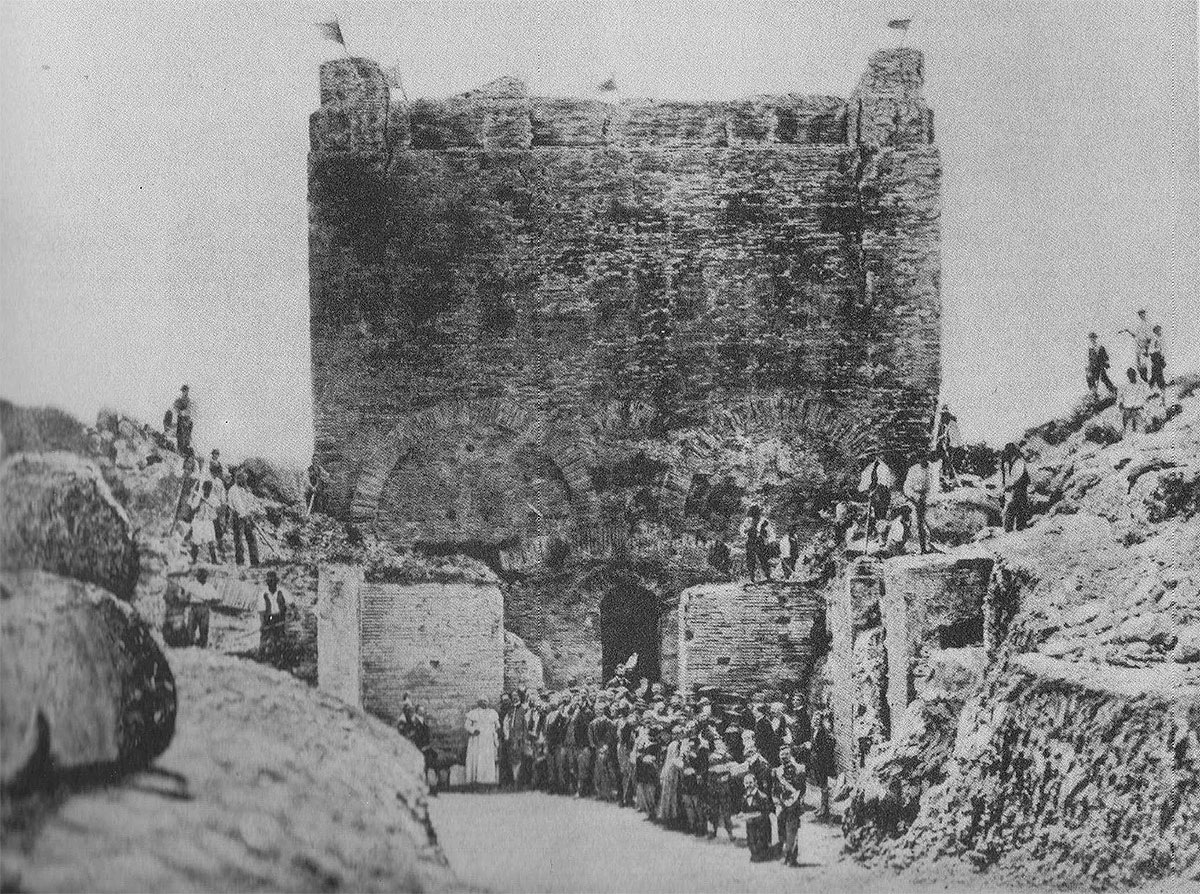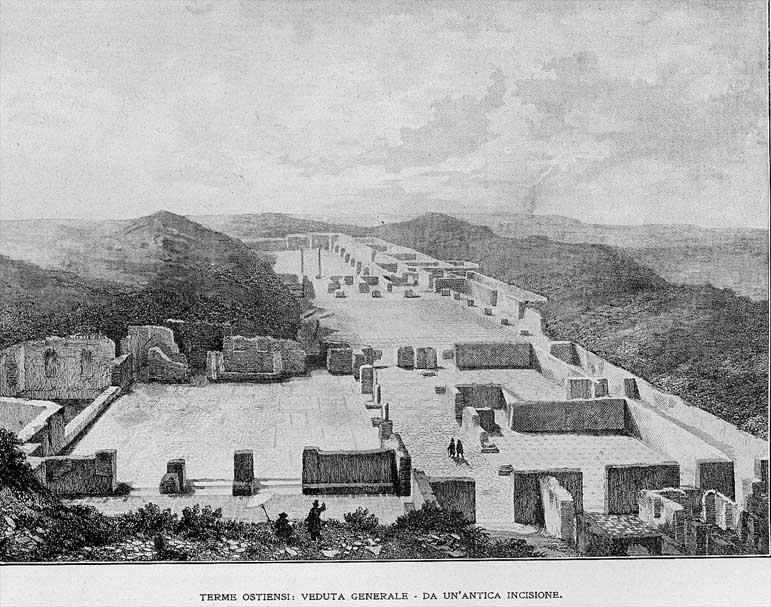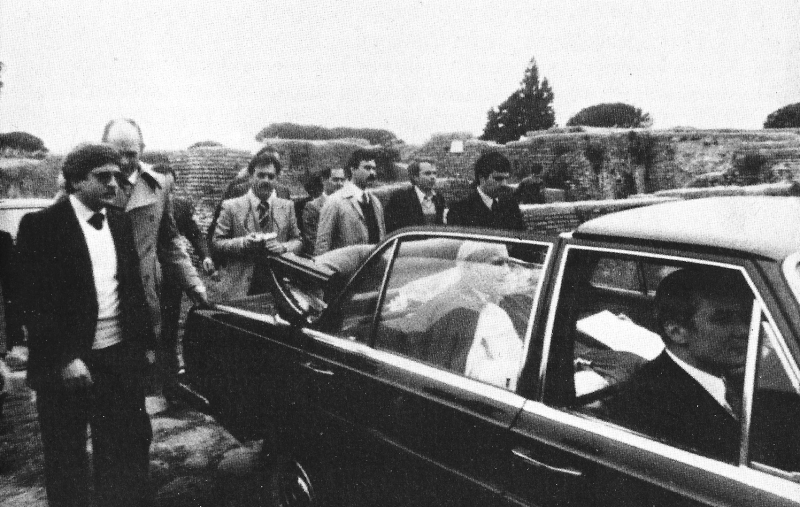THE LATER 19th CENTURY
New searches started in 1855, under the auspices of pope Pius IX, and lasted until 1870. The pope visited Ostia six times, and a photograph has been preserved of a visit on May 15, 1866. The excavators were Pietro Ercole Visconti and his nephew Carlo Ludovico Visconti. The workers were some 200 prisoners, who lived in the medieval village from December to June - from July until November the risk of malaria was too great. The Visconti's too focused on inscriptions, statues, mosaics, and paintings, which were taken to the Vatican and Lateran museums. Sometimes marble and granite were taken to Rome as building material. Their activity took place all over the city, in places such as the Field of the Magna Mater, the Porta Laurentina- and Porta Romana-necropolis, the so-called Imperial Palace, and the House of the Millstones (I,III,1). The Casone del Sale was partly rebuilt between 1865 and 1868 to function as a museum, but it would not be used as such until 1934.
From 1870 Ostia was no longer a papal domain, but owned by the new Italian state. The excavations were continued by Pietro Rosa, in 1871-72. Near the Forum he found colossal heads of Alexander Severus and Gordianus III that most likely come from the Round Temple (I,XI,1). For the first time paid workers were used. But the work remained disastrous. Holes were dug, the Ostian origin of objects was not recorded, and quays and buildings excavated between the Small Market (I,VIII,1) and the Imperial Palace were left unprotected and subsequently destroyed by the Tiber.
Rodolfo Lanciani, the famous archaeologist of Rome, was active between 1877 and 1889. He investigated the theatre, block II,VIII (including the Four Small Temples, House of Apuleius, and Mithraeum of the Seven Spheres), and, partially, the Square of the Corporations, Barracks of the Fire Brigade (II,V,1-2) and Baths of Neptune (II,IV,2). The castle in the medieval village was used as Antiquarium from 1878. Between 1897 and 1899 Luigi Borsari excavated part of Via della Fontana. The House of the Dolia (I,IV,5) near the museum was excavated by Giuseppe Gatti between 1903 and 1906.
With Lanciani we see the emergence of modern archaeology. He published detailed plans on which individual rooms were numbered. Finds are assigned to individual rooms. Stratigraphical details are mentioned. In this encyclopedic age fundamental studies appeared. In 1884 the younger Visconti published photos of all objects from Portus in the Torlonia collection. German scholars published all known inscriptions from the harbours in 1887, in great detail and after thorough research in archives (Corpus Inscriptionum Latinarum, volume XIV). Between 1885 and 1900 Jean-Pierre Waltzing published an exhaustive study of the Roman guilds. In the same period similar work was done for the cult of Mithras by Franz Cumont.

The visit of pope Pius IX on May 15, 1866. Behind the Capitolium. SO I, Tav. I.

The so-called Imperial Palace in a depiction from the 19th century.
Note the large mounds of earth on either side of the building. From Calza 1926.

Pope John Paul II paying a visit to the ruins of Ostia Antica (22 April, 1980). From De Nisi 1982, fig. on p. 111.